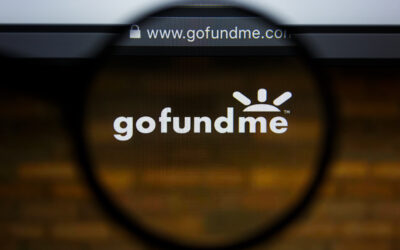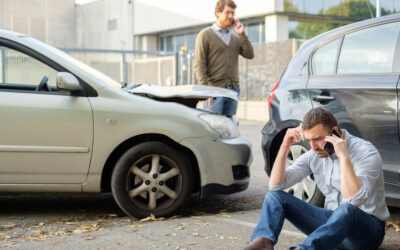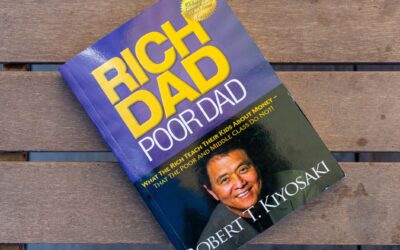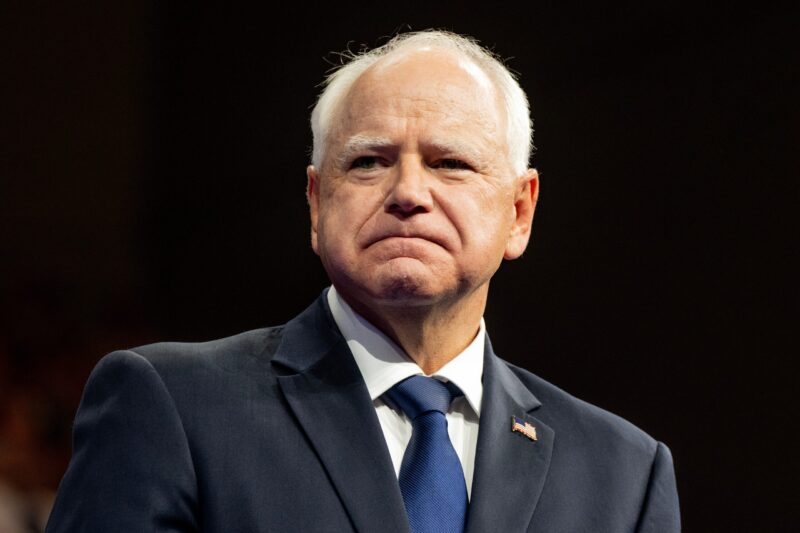Personal Finance

Army Veteran, 88, Still Working Full-Time After Losing Pension — Internet Raises Nearly $1.5M to Help
At 88 years old, Army veteran Ed Bambas still works full-time as a grocery store cashier in Brighton, Michigan. He shows up five days a week, often standing for more than eight hours at a time. While most people his age spend their days relaxing in retirement, Bambas continues to work simply because he has no other choice. He shared that he would prefer to slow down, but his income is too limited to cover his expenses. As a result, he keeps going with steady determination and a positive spirit. His story has touched millions, not only because of his age but because of the heartbreaking reason behind his financial struggle. A Promised Pension That Disappeared Bambas once believed he would enjoy a secure retirement. After retiring from General Motors in 1999, he counted on the pension and benefits he had earned through decades of hard work. However, everything changed in 2012 when GM went bankrupt. In the fallout, Bambas lost his pension, his health care coverage, and most of his life insurance. The timing could not have been worse. His wife became seriously ill around the same time, leading to mounting medical bills. Without the benefits he expected to rely on, Bambas was forced to sell his home and other property to stay afloat. The financial pressure grew even heavier after his wife of more than 50 years passed away. Left alone and without a safety net, Bambas did what he had always done—he kept working. @itssozer 88 year old veteran still working.. 😭❤️ (donate in B1O) #love #kind #veteran ♬ original sound – Samuel Weidenhofer More Stories Drowning in Bills? These Debt Solutions Could Be the Break You Need Out-of-Town Renters Are Driving Up Demand in These Five Cities Under Siege: My Family’s Fight to Save Our Nation – Book Review & Analysis Showing Up With Humility and Strength Despite the physical demands of the job, Bambas remains grateful that his body still allows him to work. He told WXYZ ABC he is “fortunate” to be able to stand for long hours and help customers with a smile. Co-workers and shoppers often describe him as polite, hardworking, and dedicated. Yet behind the scenes, he continues to work not out of passion, but out of necessity. His story is a reminder of how quickly retirement plans can collapse, especially for older Americans who depend on pensions that disappear during economic downturns. A Viral Video Sparks Nationwide Support Everything changed when Australian influencer Samuel Weidenhofer visited the Michigan supermarket and met Bambas. After hearing his story, the influencer posted a video highlighting the veteran’s situation and surprising him with a $400 tip. The video quickly gained traction across TikTok, Instagram, and YouTube. Millions of viewers were moved by Bambas’ humility and resilience. Weidenhofer decided to launch a GoFundMe campaign to help Bambas finally retire. Within hours, donations began pouring in. People from across the country—and even around the world—contributed what they could. Some gave $5. Others sent hundreds, and even thousands. Many shared stories of their own struggles or their appreciation for veterans like Bambas. Celebrities, including singer Charlie Puth, amplified the campaign by sharing it on social media. Each post helped draw even more attention to Bambas’ story and the need for change in how society supports aging veterans and retirees. Fundraising Surges to Nearly $1.5 Million Because of the overwhelming response, the GoFundMe campaign skyrocketed. At the time of this publication, the GoFundMe fund has reached just under $1.5 million—a powerful demonstration of nationwide compassion. The donations will be placed into a secure account or trust once the campaign closes. From there, the funds will help provide stability, cover living expenses, and give Bambas the financial freedom he has lived without for so many years. Most importantly, the support may finally allow him to retire with dignity. Technology Isn’t His Priority — But Kindness Is Although his story has gone viral, Bambas himself has not seen the video that changed his life. He still uses a flip phone and says he has never been on TikTok or Instagram. While the online attention feels surreal to him, he remains deeply grateful and humbled by the generosity of strangers. For him, the fundraiser is not about fame or recognition. Instead, it represents the kindness of people willing to step forward and help someone in need. A Story That Raises Larger Questions Beyond Bambas’ personal journey, his experience brings important issues into the spotlight. His situation raises questions about: The security of pensions for retirees The stability of health care and insurance benefits The support available to older veterans The financial challenges seniors face in today’s economy His story highlights how quickly life can change and how easily older Americans can fall through the cracks—even after a lifetime of hard work and service. Hope, Dignity, and a Brighter Future As donations continue to grow, Bambas’ life may soon look very different. After years of loss, sacrifice, and financial uncertainty, he now has a chance to experience comfort in his later years. With support from millions, he may finally be able to rest, enjoy his time, and live free from the constant pressure to work full-time just to survive. In the end, the response to his story proves something powerful: when people come together, even one small video can create real change. For Ed Bambas, that change is life-altering. And for the rest of us, his story is a reminder that compassion still makes a difference—one person, one share, and one act of generosity at a time. Forget the Headlines. Challenge the Script. Deliver the Truth. At The Modern Memo, we don’t tiptoe through talking points — we swing a machete through the media’s favorite lies. They protect power. We confront it. If you’re sick of censorship, narrative control, and being told what to think — stand with us. 📩 Love what you’re reading? Don’t miss a headline! Subscribe to The Modern Memo here! Explore More News Michael & Susan Dell…

Drowning in Bills? These Debt Solutions Could Be the Break You Need
Drowning in Bills? These Debt Solutions Could Be the Break You Need Across the country, families are tightening their belts and rethinking how they spend every dollar to pay their bills. With prices climbing and paychecks stretched thin, more Americans are realizing that traditional budget or debt advice — “skip the coffee” or “cut streaming services” — just isn’t enough. Real people need real solutions that make a real difference. From consolidating debt to reducing unnecessary interest and negotiating smarter repayment plans, there are now practical tools designed to help everyday individuals find relief without taking on new financial risks. These programs focus on one goal: making your money work for you, not against you. Budgeting isn’t just about cutting back — it’s about regaining control. Whether that means combining multiple bills into one manageable payment, trimming high-interest balances, or finally getting a clear picture of where your money goes each month, small, strategic changes can have a big impact over time. Financial stress can be overwhelming, but it doesn’t have to be permanent. More and more Americans are discovering proven ways to simplify their finances, lower monthly costs, and start building toward stability again — one step, one payment, one plan at a time. 1. Feeling Crushed by Credit Card Debt? This Simple Program Could Help If your paycheck isn’t stretching as far as it used to, you’re not alone. From groceries to gas to housing, rising costs are putting real pressure on the family budget nationwide. Many are dipping into savings, maxing out credit cards, or delaying bills just to make ends meet. But more and more Americans are discovering a new way to find relief — one that helps reduce debt, simplify payments, and ease financial stress without taking on new loans. It’s called debt consolidation, and it’s helping people regain control of their finances faster than they thought possible. These debt consolidation programs connect consumers with trained specialists who work directly with creditors. They negotiate lower balances on unsecured debts such as credit cards or medical bills. Instead of juggling multiple payments, participants make one manageable monthly deposit while experts handle the rest. (MORE NEWS: Should You Refinance Your Mortgage After Fed Rate Cuts?) Here’s what makes debt consolidation programs stand out: You could reduce your total debt by negotiating lower payoff amounts. No new loans — just a structured plan to help regain control of your budget. One monthly payment replaces multiple bills. Professional negotiators handle creditor calls and settlements. Many see substantial progress within months, with complete resolutions typically in 2–4 years. It’s not an instant fix, and credit scores may dip temporarily. But for thousands, debt consolidation offers a realistic path away from endless minimum payments and toward lasting financial stability. If you’ve been feeling the squeeze, now’s the time to act. See how Americans are finally finding financial breathing room — and how you can too! See If You Qualify 2. Seniors Are Saving Big — Get Full Coverage Car Insurance for Pennies on the Dollar! Many seniors are shocked to learn they could be paying far less for the same auto insurance coverage. If you’ve had a clean driving record or simply haven’t compared rates in a while, you might be missing out on major savings. Recent programs have made it easier than ever for drivers over 55 to qualify for exclusive senior auto insurance discounts — often cutting premiums dramatically. Some are finding ways to pay pennies on the dollar compared to what they used to spend, while still enjoying full coverage protection and dependable service. These discounts aren’t always advertised, but checking your eligibility only takes a minute. By comparing trusted providers, you can quickly see how much you could save — no hidden fees, no obligation. Find out if you qualify for full coverage car insurance for pennies on the dollar — and start saving today! Compare Rates Now 3. Finding Relief: Real Debt Relief Options Helping Americans Reclaim Control For millions of Americans, debt has become more than a number on a statement — it’s a source of constant stress that affects every part of life. Between rising prices, unexpected expenses, and interest rates that seem to climb overnight, many households are struggling to stay ahead. But now, a growing number of people are discovering real debt relief options that can finally make a difference. Unlike traditional loans or credit counseling, modern debt relief programs focus on helping you reduce what you owe — not just shuffle it around. These programs connect you with experts who negotiate directly with creditors to settle accounts for less than the full balance, often saving participants thousands. The goal is simple: to create a manageable path toward financial stability, without taking on new debt. Here’s what makes debt relief programs stand out: You could cut down your total debt by negotiating lower settlements. No new loans or long-term contracts to worry about. One affordable monthly deposit replaces multiple bills. Professionals handle creditor calls and negotiations on your behalf. Many participants become debt-free within 2–4 years, depending on their situation. It’s not a one-size-fits-all solution — and it’s not instant — but for thousands of Americans, debt relief offers a fresh start after years of financial stress. If you’re feeling buried by bills and high interest rates, there’s a way forward. Explore today’s debt relief options and see how you can finally get ahead! Get Relief While It’s Available #4 Medicare Open Enrollment: How Seniors Are Saving on Healthcare Costs Healthcare can quickly become one of the biggest expenses in retirement — but it doesn’t have to be. During Medicare Open Enrollment, seniors have a valuable chance to review and update their plans, often unlocking better coverage and lower costs. Many Americans over 65 don’t realize they could qualify for extra benefits, like vision, dental, hearing, and prescription coverage, all while reducing premiums. Comparing plans now could save hundreds — or even thousands — of dollars each year. Here’s why reviewing your Medicare options…

1 in 3 U.S. Drivers Lack Enough Car Insurance, Study Warns
Imagine getting into a fender-bender on the way to work, only to discover the other driver is uninsured. Suddenly, you’re not just late for a meeting, you’re staring down thousands of dollars in bills. Replacing a bumper today costs more than some used cars did a decade ago. And a single ER visit can run higher than your monthly mortgage. That’s why the latest study showing one in three drivers lack enough insurance should make everyone pay attention. A 2025 report from the Insurance Research Council (IRC) reveals that more than one in three drivers in the United States were either uninsured or underinsured in 2023. The study, Uninsured and Underinsured Motorists: 2017–2023, shows the combined rate climbed to 33.4 percent, a sharp increase from 23.8 percent in 2017. This growing problem highlights the financial risks drivers face every time they get behind the wheel. Breaking Down the Numbers The IRC study provides a clear picture of how widespread the problem has become: 15.4 percent of drivers in 2023 carried no auto insurance at all. 18.0 percent of drivers carried insurance that failed to fully cover the costs of a serious accident. Together, uninsured and underinsured drivers accounted for more than one in three motorists nationwide. The report explains, “Uninsured motorist and Underinsured motorist claim frequencies increased at faster rates than Bodily Injury claim frequency, leading to a sharp increase in the combined rate of uninsured and underinsured motorists.” In other words, accidents are costing more, and too many policies are falling short. (RELATED NEWS: Skipping Coverage: The New Trend Among Young Adults) State-by-State Differences The risk is not evenly spread across the country. According to the IRC, “Uninsured motorist rates varied dramatically by state in 2023, ranging from a low of 5.7 percent in Maine to a high of 28.2 percent in Mississippi.” Insurance Information Institute reports: New Mexico had an uninsured rate of 24.1 percent, while the District of Columbia followed with 23.1 percent. On the lower end, Utah posted 6.2 percent, and Idaho recorded 6.4 percent. Underinsured motorist rates climbed in nearly every state between 2017 and 2023, with the only exceptions being New York and the District of Columbia. This means drivers in certain regions face a much greater chance of being hit by someone without adequate insurance. Why the Numbers Are Rising Coverage reflects economic and legal factors at the time. The report notes that “UM rates rose in nearly every state from 2019 to 2020,” showing the strain of the pandemic on household budgets. Even as the economy improved, rates did not return to pre-pandemic levels. Rising medical and repair costs push up claim amounts, and when policies fail to keep pace, the gap between coverage and actual costs grows wider. Many states also set low minimum coverage requirements. Florida, for example, is the lowest in the country. The state only requires $10,000 property damage liability. These minimums are not enough to cover the expenses of a modern accident, leaving even insured drivers underinsured when serious injuries or major property damage occur. The Risks for Fully Insured Drivers Drivers who carry good insurance may think they are safe, but the study underscores the risk for everyone. If an uninsured or underinsured driver causes a crash, the other party often has to rely on their own coverage to pay for damages. Without uninsured or underinsured motorist protection, victims may face overwhelming medical bills, repair costs, and lost income. The IRC warns that higher underinsured motorist rates can also “worsen affordability” for everyone, since insurers spread the rising costs across all policyholders. This means responsible drivers end up paying higher premiums as the pool of underinsured drivers grows. (MORE NEWS: United CEO Scott Kirby Says Spirit Airlines Will Collapse) How Drivers Can Protect Themselves The study makes it clear that every driver should take a closer look at their own coverage. Practical steps include: Review your policy to confirm you carry uninsured and underinsured motorist coverage. Raise liability limits above state minimums to guard against lawsuits and high-cost accidents. Consider collision and comprehensive coverage if your vehicle is valuable or still financed. Shop around for competitive rates, look for discounts, and adjust deductibles to keep premiums manageable. Taking these measures ensures you are not left exposed when facing an at-fault driver who lacks enough insurance. Final Word The IRC’s findings send a clear warning: Drivers are often unprepared for tragedy. They take risks—not only with their own health and property, but everyone else’s too. They also leave themselves open to lawsuits if they are not full covered. One mistake by an uninsured driver, or one decision to carry too little coverage, can alter the course of your life. We’re all just one accident away from a financial mess. Don’t let someone else’s mistake ruin your life. Review your policy today, raise your limits if needed, and give yourself the peace of mind you deserve. Forget the narrative. Reject the script. Share what matters. At The Modern Memo, we call it like it is — no filter, no apology, no corporate leash. If you’re tired of being lied to, manipulated, or ignored, amplify the truth. One share at a time, we dismantle the media machine — with facts, boldness, and zero fear. Stand with us. Speak louder.

“Rich Dad, Poor Dad” by Robert Kiyosaki: A Book Review
Read It or Leave It Robert Kiyosaki’s Rich Dad, Poor Dad remains one of the most influential personal finance books ever written. It challenges the way we think about money, work, and financial freedom. Kiyosaki tells the story of growing up with two father figures—his biological “poor dad” and his best friend’s “rich dad.” Each taught him a completely different philosophy about money and success. Two Philosophies of Money The “poor dad,” Kiyosaki’s biological father, represents the traditional mindset of the poor and middle class. He believed in hard work, job security, and higher education as the only path to success. Though had a Ph.D. in education, yet he lived with fear of losing his job and focused on what he couldn’t afford. He avoided risk and trusted the idea that a good job with benefits was the ultimate safety net. The “rich dad,” however, thought differently. He only had an eighth-grade education, but became one of Hawaii’s wealthiest businessmen. He didn’t ask if something could be done—he asked how it could be done. Instead of seeing limits, he searched for financial solutions and opportunities. He believed in taking risks, building businesses, and acquiring income-generating assets. Key Lessons from Rich Dad, Poor Dad Kiyosaki and his friend learned firsthand from “rich dad.” He taught them the value of money by putting them to work, not by handing out cash. His focus was on financial literacy, passive income, and making money work for you instead of trading time for a paycheck. (RELATED NEWS: Back-to-School 2025: How Parents Are Spending) One quote that stood out to me as helpful insight was: “Keep your daytime job but start buying real assets. Not liabilities or personal effects that have no real value once you get them home. Keep expenses low, reduce liabilities, and diligently build a base of solid assets.” This lesson lays the foundation of the book: it’s not about how much you earn, but about how much you keep and grow. Kiyosaki drives this home with another insight: “There is a difference between being poor and being broke. Being broke is temporary. Poor is eternal.” That simple distinction shifts the mindset. Financial struggle is not inevitable; it’s tied to habits and decisions. The Power of Assets vs. Liabilities One of the most powerful takeaways from the book is understanding assets and liabilities. Kiyosaki explains: “An asset puts money in your pocket. A liability takes money out of your pocket.” This concept sounds simple, but it’s a game-changer. Many people think they own assets when they’re really buying liabilities—cars, gadgets, or even a house that drains cash without creating income. Another helpful quote is: “A person can be highly educated, professionally successful, but financially illiterate.” Financial literacy, Kiyosaki argues, matters more than academic degrees when it comes to building lasting wealth. (RELATED NEWS: Catherine Zeta-Jones and the U.S. Homeownership Divide) Quotes That Inspire Action Throughout the book, Kiyosaki drops memorable one-liners that shift the way you think about money. These are some of the quotes that stood out: “So many people say, ‘Oh, I’m not interested in money.’ Yet they’ll work at a job for eight hours a day.” “Once you understand the difference between assets and liabilities, concentrate your efforts on buying income-generating assets.” “Wealth is a person’s ability to survive so many days forward – or, if I stopped working today, how long could I survive?” “Financial struggle is often directly the result of people working all their lives for someone else.” “Often in the real world, it’s not the smart who get ahead, but the bold.” “Simple math and common sense are all you need to do well financially.” “Most people never win because they’re afraid of losing, or failing.” Each of these insights pushes readers to take control, think differently, and act boldly when it comes to money. Why This Book Still Matters 28 Years Later This is a book every young adult should read. Schools rarely teach financial literacy at the high school or college level. Rich Dad, Poor Dad fills that gap by teaching practical principles: Build multiple streams of income. Reduce liabilities and grow assets. Learn to invest in real estate, stocks, and businesses. Don’t just work for money—make money work for you. As Kiyosaki points out, acquiring more money won’t help if you don’t know how to manage it. Money management, not just income, creates financial security. Final Thoughts Rich Dad, Poor Dad is more than a personal finance book—it’s a mindset shift. It helps the reader to stop thinking like a “poor dad” and start thinking like someone who has a strong financial future. It’s a challenge to step out of a comfort zone, to take healthy risks, and to reframe how money is viewed. If you want to achieve financial freedom, change your mindset, and start building wealth, this book is a must-read. Keep it in your personal library and revisit it often. It’s an excellent guide for anyone ready to stop living paycheck-to-paycheck and start building a life of financial independence. Definitely READ IT! Beyond the Hype. Into the Truth. At The Modern Memo, we don’t chase trends—we cut through them. The glossy marketing won’t tell you if a book is worth your time, but we will. Tired of sugar-coated reviews and fake five-star ratings? We rip the cover off and get real about what’s inside. Honest reviews. No spin. No apologies. Because readers deserve more than hype. They deserve the truth.

